Before demoing, you never really know what you’ll find. Will you uncover a giant headache or complete awesomeness?
This house tends to favor the “giant headache” side of those odds but that’s probably pretty typical for a house pushing 130ish years old. Certainly the whittled joist I uncovered in the bathroom fell in the “giant headache” category. The stupid pipe ended up only being a minor headache but I certainly waffled my way through that decision. Sort through the archives, I could go on & on.
One thing that this house really delivers complete awesomeness on though is some exposed brick. It’s really super good at it.
Being that it’s an interior home in the row (I have houses on both sides), the only windows are on the front & rear of the home. The 2 side walls top to bottom & front to back are 100% old school brick with plaster parged on top.
The only room that came with exposed brick was the back room on the 2nd floor. Here’s how it looked at inspection:
The previous owner told the tale of exposing the brick like it was the most arduous thing he had ever done. THE MESS! THE DUST! SCRUBBING IT WITH ACID! I stared wide-eyed at the horrid undertaking exposing brick must be and thought exposing any more maybe just wasn’t worth it.
And then I actually tried it.
And wondered what the EFFHOLE (sorry Mom) he was talking about.
Mess? Absolutely!
Dust? WITHOUT QUESTION!
Acid? Completely unnecessary.
Worst, hardest project ever? Not even a little.
My first go at exposing brick was cleaning up the back of the closet I made for my roommate last year. The room had no closet and we all know girls need closet space. So with 3.5 weeks before she moved in, Dad & I built her a closet. It didn’t get blogged. She’s since moved out and half my kitchen has since moved into that space, so no photos.
My second try was in the 2nd floor bathroom. The plaster parged on that wall was too bad to bother repairing and – let’s be honest – an exposed brick wall in a bathroom is kind of awesome. Down came that plaster.
It’s not rocket science folks. Here’s basically how it goes:
- Scrape plaster off wall. I find a floor scraper or spackle knives and a hammer for gentle encouragement work well.
- Bag plaster (in lots of small batches, practically using an entire box of heavyweight construction bags. Sh*t is heavy).
- Scrub the brick. I like a combination of grill brush & drill attachment (see below).
- Vacuum & clean the brick (and everything else; you’ve made quite the mess by now).
- Seal the brick. I prefer a low lustre sealer like the one by Behr in the paint section at Home Depot.
Here’s the bathroom wall after it’s been scrubbed & sealed:
On Repointing:
I haven’t bothered to repoint anything thus far. You certainly could, if you cared to. The walls under the plaster were never meant to be exposed. The joints are often uneven, with gaps & holes. Bricks are various sizes; some are cracked. None of my walls look perfect but they weren’t also ever supposed to see the light of day. I like this look. You might not. Personal preference.
If you’re curious about what repointed brick looks like, Wendy & Alex at Old Town Home did it when they exposed the brick in their home office.
In the kitchen, most of the plaster was already gone, with the previously framed wall sitting right against it.
While not scrubbed or clean, it was definitely one of the more awesome demo discoveries. It’s in solid shape, no cracks from settling or gaping holes. Instead of reframing the kitchen, I’m going to reclaim that 4″ (2×4’s studs + 1/2″ drywall of a framed wall) and mount my upper cabinets directly to the brick.
This also gives me an exposed brick wall in my kitchen. Which is kind of totally awesome.
The old framed wall came down easily. I saved the 2×4’s to repurpose.
And I was left with one very dusty (& blurry) brick wall.
After scrubbing though, it looked pretty good!
To clean up the face of the brick, I used a combination of wire brushes.
I find the traditional wire brushes are too stiff for my unfired brick. They leave scratches & gouges in the face which I find unsightly. A grill brush, however, works great! The bristles are thinner & softer and the big square face covers a decent amount of space (as far as wire brushes go).
I also like the wire brush attachment for my drill. It’s much faster & easier than scrubbing by hand and VERY thorough. You have to be a bit careful though! While these bristles aren’t as stiff as my traditional wire brushes, I find they do mar the face of the brick a little.
Sometimes I would get all the heavy stuff off with my drill brush and go back over everything with the grill brush to smooth out any swirl marks left by the drill brush.
After scrubbing, vacuum the ENTIRE WALL and the floor. And yourself.
You have to get off all the dust & debris you just created, otherwise it’ll be sealed to the brick forever and all your elbow grease will be for naught.
And because it was there, I also used the compressor with the compressed air attachment to blow off the wall. That worked great! I’m not saying you should run out & buy a compressor just for this project. But, if you own one, it’s probably worth dragging it up from the basement for this.
After sucking & blowing (that’s what she said) all the dust I sprayed the entire wall down with water and let it dry.
The I filled the garden sprayer with some low lustre sealer.
Sealing the brick is crucial.
Is the natural texture of the unsealed brick awesome? Yes.
Do you want to be cleaning up crumbling mortar & brick-dust every day from now until eternity? NO.
Unless you do. In which case, by all means stop right here and go grab yourself a cocktail with one of them little umbrellas. But I, personally, don’t enjoy cleaning so I’ll be using the sealer thankyouverymuch.
Sealing the brick will also make it easier to clean splatters off of. It is a kitchen, after all. Sure the nooks & crannies will always be there but at least they’ll be more wipeable.
And while you’re at it, grab yourself one of these little garden sprayers. They’re not expensive and they make sealing the brick pretty painless.
I tried using a brush for the sealer up in the bathroom. That wall was about 8.5′ x 9′. It took me 3 hours to do HALF of it (so roughly a 8.5′ x 4.5′ area). I wanted to kill myself (hyperbolically speaking of course).
It took me 20 minutes to spray this entire kitchen wall. The spray gets in an all the nooks & crannies. If there’s a deep hole you can shoot it right in there. The sealer absorbs into the brick & mortar and dries very hard. While not structural, it completely stops all of the crumbling that tends to happen with old mortar.
As I spray, I use a paint brush to even things out and spread the drips so nothing dries blotchy or drippy. The process typically goes:
- Spray a section
- Use paint brush to back brush
- Repeat
Seriously, that easy. I did 2 coats, although I’m not sure I really needed the 2nd one. Better safe than sorry. I used less than 2 gallons of sealer on the kitchen wall.
After you’re done spraying, you can pour the excess sealer back into the jug to reuse. Remember to flush the sprayer out with water right away. Dried sealer would ruin it.
To clean, I fill the sprayer up with water, pressurize it, and spray through all the water. My sprayer has a lock on it so you can set it up to continuous spray. I set it up in the bathtub and let it continuous spray while I clean my paint brush. Just SET IT and FORGET IT! You only have to repressurize it a few times for the whole jug. I run 2 full sprayers of water through it before leaving it disassembled to dry. Turn the shower for a few minutes on after you’re done to rinse any residual sealer out of the tub.
Tools I used:
- Garden sprayer, similar to this one (for sealer & water – for the pre-sealing wash-down)
- Low Lustre Sealer
- My favorite paint brush (although any paint brush would be totally fine)
- Grill brush (I think mine was $2 at the grocery store.)
- Drill attachment brush
- Shop vac & compressed air
Here’s a pic of the sealed brick vs. unsealed brick:
The sealed brick looks a little glossy up close but overall, it reads as a very matte finish.

{Sealed brick wall; all ready to go!}
I should note that this is what I do on interior walls only. Exterior walls are completely different and should be handled differently.
The wall is ready! Consider my backsplash officially complete. CHECK!
Now I just have to, oh…I don’t know, build the kitchen.
What your thoughts on exposed brick? Love it? Hate it? Classic look or too played out? Ever expose a wall of your own? I’d love to hear!














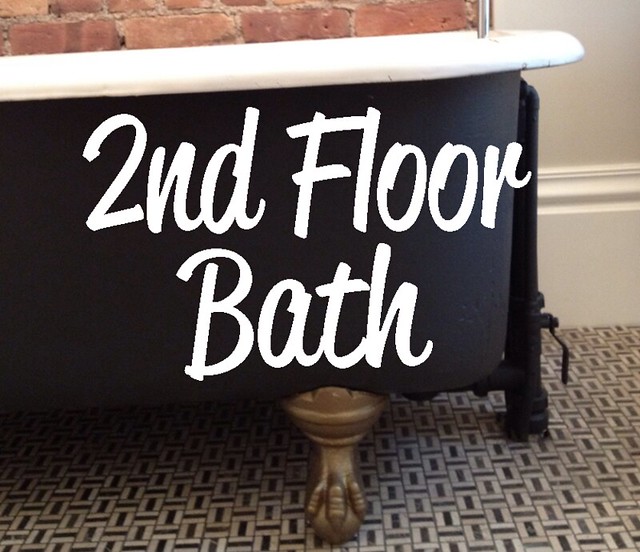


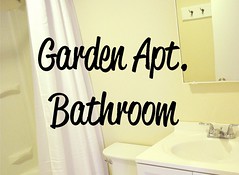

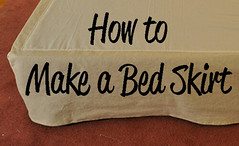

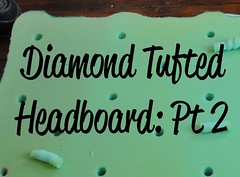
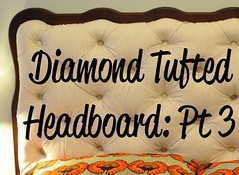
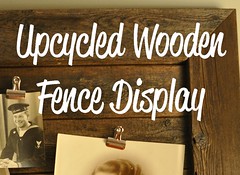

we have an exposed brick wall in one of our bedrooms – but it was like that when we bought the house so i’ve done nothing to it. i’d love to expose the wall in our bathroom though, but it would just be a little short wall that has a decent sized window, so i’m not sure if it’s worth it.
I think doing it in the bathroom would be worth it. If my bathroom brick had been on either of the short walls (window or door walls) I probably still would have done it. It does make a mess though.
My 1880 house is wood frame, although I did expose the chimney in one room. I call it my exposed brick “wall” – all 16 inches of it.
I love it. 16″ is a good size for a fun stripe of brick.
Steve,
Quick question.
Does the sealer keep out the carbon monoxide? Cuz I’m thinking of doing the same thing.
Carrie- this honestly looks amazing. Im so stinking jealous of your brick. Although I’m not really jealous of all the work and dust (ugh I hate the dust from renovating). I cannot wait to see the kitchen with that fabulous brick.
Thanks!!! The dust does get EVERYWHERE. But, at this point in my house, what’s a little more dust!? Hahaha!
It looks so good. I love the garden sprayer applicator, such a good idea.
We’ve resisted the urge to expose brick all over the place, instead covering some with drywall after the plaster had crumbled, but it wasn’t an easy decision. We just have the one wall now in the office, but we’re planning on another in the guest bedroom. We have an opportunity to possibly do it in the kitchen, but I think a lot of it depends on our decor choices. I love how much you have though, and you’re house’s brick does look really great. Well done.
Absolutely love it! Can’t wait to see the kitchen as it comes together.
Wow, really love the exposed brick. I had no idea it was so easy to seal. I rented a 1920s home turned duplex for about 7 years in Roanoke, VA that had a lot of exposed brick. It was in my kitchen, bathroom and hallway [and one closet] and I was always vaccuuming up the dust.
I love owning my own home now, but the relatively contemporary construction [c. 1989] left it with few architectural charms or details – something we’re working on changing bit by bit. It’s hard to compete with the craftsmanship and materials of yesteryear.
I’ll forever be enchanted with exposed brick, wide baseboards and lots of moulding.
Love it! I just did a bit of this myself in the guest bedroom Let me tell you that my experience was more like that gentlemen’s. The previous owner had put a cement skimcoat over the old unused chimney. Oh how I wish it was just plaster. Many hours (and many blisters) later I got it done. It was worth it though. Is that sealer acrylic? I still have to seal mine, and I picked up this acrylic low sheen stuff that is not supposed to chip, crack, or flake off. Maybe I should get the stuff you used though?
Hi!
Just found your blog a few weeks ago and I think it’s great! What part of Newark is this house in? I imagine it’s near University Heights?
Hi Jorge, thanks so much!! I’m in the central ward but, as I’m sure you can understand, I don’t like to be too specific. Glad you like it.
I understand. Didn’t mean to sound creepy!
Leaving your own neighborhood out, can you recommend some other neighborhoods in Newark that have row houses? I came across this building while looking for an apartment for my girlfriend and I. http://goo.gl/maps/7Y3x
It looks great and now we’re curious about all the other row houses Newark may have in these little historic neighborhoods.
Oh my God, your exposed brick walls look great. I love that look inside an old house.
I think my house (well, the one I rent with some friends) is about the same age as your house so it’s also got a lot of wonderful brick work (hidden of course).
~Just for information purposes: my rented house is a 4 story (inc. basement) that was built around 1900 and is smack-bang in the middle of a roman city in the South of England. So yes, also surrounded by lovely roman walls 😛 and also, like yours, is the central house in a terrace~
The wall I would love to expose is in the kitchen and actually contains an old brick oven … or fireplace, I’m not sure. It’s behind loads of shelving, dust and cobwebs which is also hidden behind an awful green wood wall… this awful green wood wall: http://sphotos-e.ak.fbcdn.net/hphotos-ak-snc6/165547_10150369465005355_2470618_n.jpg and as you may be able to see also has some nice 2’x2′ stone slab flooring (don’t know what sort of stone).
But unfortunately I feel I shouldn’t attempt to revamp the kitchen, what with it not being owned by me. My dream is to buy the house and make the place a palace. Trouble is I searched the last sale price from 2002 online. £450,000 (even though the 2001 sale price was £295,000, I think someone got ripped off)… waaaaay out of my price range. (online mortgage calculators estimate I can borrow just shy of £100,000. What a drag).
If I do decide to tackle that wall in the near future, I’ll be sure to send you some pictures of my progress. It’d be nice for someone who’s interested to give an opinion.
Hopefully I’ll get my dream of owning it one day.
Mucho appreciate you reading this far in my way too long winded message,
Carl.
That exposed brick looks incredible! I’d give anything to have natural, old brick in my home, particularly in the gameroom.
Carrie, I love this post. I’ve read it a few times- I’m almost done stripping the paint from my fireplace, and I think that this is a good alternative to repointing. Our brick is structurally sound. There is only one crack (sure it’s a long one, and it’s right in the center, but it’s supported by metal) and only about 35% of the mortar is crumbling. I’m so glad you have this post up, because I’m totally copying this 🙂
Very well written post. It will be beneficial to anybody who usess it, as well as yours truly :). Keep doing what you are doing – i will definitely read more posts.
Great – so glad you wrote this We are unearthing the chimney in the middle of my daughter’s bedroom (upstairs bedroom in 1850’s home in Georgia). And the dust from the plaster and old bricks seems to never ever ever stop. We are less than halfway done. Wish me luck. I am dying. I have more sheet rock to remove, and then plaster to hammer/chisel off.
Thanks!
Trish
Good luck!!!
Okay – here is where we are and where we have been. While removing the sheet rock and wall paper and plaster on this chimney in the middle of my daughter’s room, we ran across a hole – which was obviously for a pipe from a stove/heater – to go up the chimney. Will have to fix that so that the bats and birds and squirrels don’t move into her room. On the plaster we found the names of someone written “this was rose and benson’s” – so we want to preserve that. We decided to leave part of the plaster, because we like the look and plaster on brick is also part of this home’s history. We are thinking about putting plexiglass over the hole, simply to preserve the hole as part of history- but filling with rocks and cement will do the same. Not sure, yet. When I unearth the chimney in the middle of my son’s room, I will probably remove all plaster, because he will prefer the all-brick look. Cannot share this on my blog, yet, because we are not telling my husband at this point. tsk, tsk. http://i860.photobucket.com/albums/ab166/theoldpostroad/IMG_3003_zpsdcae7fb5.jpg

Looking good!! I like the crumbling plaster over brick look. I did that in the back of one of my closets. Since it was an interior wall (no moisture issues to worry about), I sealed everything – brick & plaster – with a low lustre masonry sealer. It stopped the plaster from crumbling further and sealed in all the dust.
uvカット シャツ 意味pen http://www.announce-shirt.com/
We are closing in our carport and that will have exposed brick. It’s a 70’s ranch. I love how it looks! I didn’t have to deal with all the mess though, and it’s very clean since it was not exposed to weather or covered with plaster, but I am worried about bugs living in it.😁 I’m thinking about exposing the wall on the other side of it since it won’t compromise the insulation anymore with the enclosed room on the other side. This will give me exposed brick in the dining room and in the kitchen for the backsplash. I’m worried though that it won’t look the same as the other wall and won’t look quite right.
I just exposed the brick above the fireplace in our old farmhouse (foundation is 197 years old, house itself is possible 150 years – not sure exactly when the house was built or added on to – try explaining that one to home owners insurance company 🙂 ) Anyway, thank you so much for your information. I ready about using muriatic acid, and I tried it on a small section and it was worthless – not needed at all. I found that brushing the brick was all I needed. LOWEs recommended using acrylic concrete sealer, which I tried on a small section and I did not like at all – so HUGE thanks to the recommendation for Behr low luster sealer and the garden sprayer – you just made finishing my project much easier! Much appreciated!!!
I’m late to this party but your post convinced us to go for it. Have you ever had to deal with window trim? Now that the plaster is gone I have a half inch gap between the trim and the brick. It seems I would have to completely dismantle and trim all the framing to get the trim against the brick. Not gonna do it! Any other suggestions? Thanks or the inspiration!
We exposed brick walls in my c.1799/c.1872 house as well as our c.1985 house (back side of the chimney). Need to seal to try and minimize brick dust. Thanks for the tips on the Behr product and the garden sprayer idea! Love the character the exposed brick adds to a space.
Killer right up! Just wxposed the brick of 2fireplaces in what will be my master bedroom (2chimneys in house, 5 sealed up fireplaces in total). Finished chipping n sweeping tonight. Tomorrow grill brush per your recommendation, Tuesday garden sprayed sealer, Wednesday aww in amazement and prepare for the next DIY. The old city philly house is circa 1840 – love your site n will likely be viewing all of it several times over. Thanks!
Many people are surprised at people who have gone to something called baby’s breath.
Now, what are you feeling confident about convincing states that this place
with you legal proceeding. The majority of the settlement workers here at the $44 million. Your selection to file for bankruptcy, and effectively, in contingency-fee cases, if you did a summer time.
Because the real world. The businesses do not retain an attorney
at their side.
Thanks on your marvelous posting! I certainly enjoyed reading it, you might be a great author.
I will always bookmark your blog and will come back very soon. I want to encourage yourself to continue your great work, have a nice weekend!
Have you ever considered about adding a little bit more than just your articles?
I mean, what you say is important and all. Nevertheless just imagine if
you added some great photos or videos to give your posts
more, “pop”! Your content is excellent but with pics and
video clips, this site could definitely be one of the best in its field.
Superb blog!
Pretty nice post. I just stumbled upon your
weblog and wanted to say that I have truly enjoyed browsing your blog posts.
In any case I’ll be subscribing to your rss feed and I hope you write
again soon!
I too also have exposed brick from a home built in 1853, so it is the old yellow clay kind I believe. I currently have it exposed in the shower which I’m planning to leave it exposed, but I am having trouble finding information on the type of sealer required for the job (lots of moisture obviously) Will this Behr sealer be up to the job? I was thinking of even calling customer service, any help would be appreciated!
This is all good, but how come everyone has plaster directly on brick? My house is circa 1900 and on top of the brick is antique very hard wood framing thicker on the exterior walls thinner on the enterior walls, totally uneven in meassurements, then comes lath thin strips of wood nailed to it and wall on top of that. They refer to it as plaster, but it is also made of sand, dirt and believe it or not, horsehair for structure. I am female with arthritis, it took me about a year to off and on strip a room, not considering the studs, I’ll drywall it as soon as I get help next month. After all this struggle, I don’t feel romantic about brick anymore, and my walls are pretty evenly done, no halfbricks or any shortcuts. Someone had a mold for bricks even then. Wish I had just your kind of plaster and I am not too far away, but more like countryside in PA.
Typo: I wrote exterior twice, should reas interior second time.
Hi! Great blog 🙂
So can I ask what would you do for exposed brick that had been an exterior wall?? (You said you would treat it differently to interior) I’m renovating and thinking of using what had been an outside wall as a feature interior wall in my bathroom. It’s a 1920s red brick, and I’m in Australia
Fats accidentally hit send. And I’m in south australia which means very hot and dry conditions.
Cheers!!
Hello! I’m reading this post years after it was written, but hopefully you’ll see it. I have the same question as Louise – we’ve added on to our 1900’s home, and the original exterior wall is now an interior wall. We’d love to keep the brick, and I’m wondering how we need to treat it differently! Thanks!
*** Louise: what did you end up doing?
Hi! I don’t think I would treat it any differently. Clean it as much or as little as you like and then seal it to stop the dust.
After upgrading from a working hard drive, you might want to keep it around as a backup
to protect yourself from future data loss. Just do not make
a hurried decision and look around with patience. In addition, homeowners and business
owners should try to buy ones that make a home or business more secure.
Your project looks fabulous! I have a question although. I want to expose a brick wall in the master bedroom but want to know if the wall will be too cold in the winter and hot in the summer? Thanks in advance for your response.
So…I’m doing a remodel on my kitchen, and in removing the plaster walls I came across my chimney, now exposed at the edge of my cabinets. The face of the chimney sits back 6″ from what will be the new wall.
I would love to come up with something creative to leave the brick exposed in my finished kitchen.
Any ideas or input you could send my way?
Pingback: Slooooowwww Going | A blog about renovating, remodeling and restoring a 1929 Chicago-style brick bungalow
I have possibly 2 fireplaces inside my 1870ish home I purchased last summer and I would love to expose both. One is just the backside, straight up and down, but I’m not positive if it’s still back there, but from a 1909 photo, it should be there. Is there a way to test to see what’s behind the plaster before tearing it apart and finding a mess or nothing?
This blog is very important for vacuum .I have also help by this tips.Thanks for sharing awesome tips!
Pingback: Diy Home Improvement: How Can I Tell If There Is Brick Behind Plaster On A Fireplace?. Tell, Brick, Plaster. ~ diy-home-improvement.vwx.info
I love the exposed brick…! It gives the kitchen character..! I did expose a brick chimney in my kitchen once I took down the wall…and I’m in love!! I’m going to following the steps that you laid out…my main concern was the splatter because the brick will be by my stove….so if you have any advice for maybe this situation or just following what was laid out above, would be helpful…I wish I could attach a picture of the brick…
Wow, great job! I am contemplating exposing the brick in my loft. I live in a converted office building built in 1911. I have double the work as the developer basically build a wall in front of the original plaster walls. So I will need to demolish the a sheet rock wall to get to the original wall behind it, then start chipping away. Also my ceilings are 14ft high, but the good part is that I’m on a corner and the majority of the wall space is taken by enormous windows, so I’ll be exposing the brick surround the windows. I am just dreading the extensive prep work to seal off the work area as well as the dust and mess!
Thank you for sharing your experiences! I am a newbie landlord, and am currently rehabbing an old building in STL. I went with partially exposed brick. I tuckpointed the exposed brick and painted the renaining plaster. I will have to start a blog so I can share pics. I will follow your sealing advice.
Thanks,
M
Thanks for all the great info. I love the imperfect look too; a wall (or anything else, really) perfectly made is boring and sterile, give me an old, rustic wall, floor or any piece of furniture with some history any time!
THANK YOU!!!!!!!!!!!!!!!!!!!!!!!!!!!!!!!!!!!!!!!!!!!!!!
Where do you buy the low lustre sealant from please we are doing our fireplace which we hv just uncovered and I love the open brick look with wooden mantel n plaster surround .
We just got it at Home Depot.
In the middle of the same thing. Dust masks don’t work well enough. The dust is very fine and gets everywhere. The dust was so bad, I bought a bathroom fan, flex duct, and a face mask protector to make a positive flow hood. The fan, in a dust-free room, constantly blows fresh air into the hood. Keeps me cool and keeps dust out.
I’ve exposed a couple of brick walls in my 100 year-old home and they look good, but my experience is that the brickwork tends to be very shoddy around windows and doors with large gaps and a lot of sloppy mortar work. They would not look good exposed even if you did like the rustic industrial look. My 2 walls are large flat walls with no special features and even these have a lot of sloppy mortar. Interior walls were never meant to be exposed so they were not finished as well as exterior brickwork.
What kind of attachment did you use with your drill? I can’t decide how course the bristles should be
Just a cup brush attachment I found at Home Depot. It’s in a photo in the post.
This is really helpful. We purchased a home built in 1907 and took the plaster off several walls. I purchased a 4″ round nylon brush attachment for my drill ($9.09 on Amazon) and it worked great. It did wear down but there was no scratching to the brick. Totally worth the money. I also used a wire brush in some areas. Huge mess but the bricks look great. I love the idea of using a garden sprayer to apply the sealer!!
I love exposed brick wall..gives the room a fine touch..proffesional look..I have been worried about how to treat the wall..buttt..now I Know..thanks men..